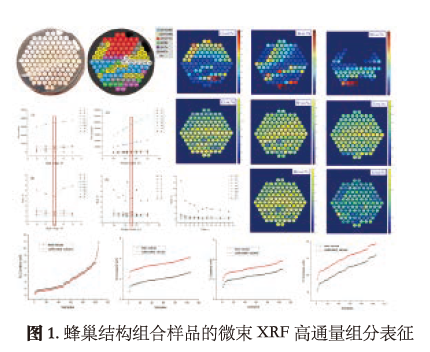Zhao Lei1, Liu Suran1, Yang Lixia1, Wang Hui1, Zhu Lilong2, Huang Zaiwang3, Wang Haizhou1*
1The NCS Testing Technology Co., Ltd., Beijing, 100081, China
2Yantai University, Shandong 264005, China
3Central South University, Hunan, 410083, China
EXTENDED ABSTRACT: The combinatorial-sample is an important way to quickly obtain many different materials in material genome engineering filed and high throughput characterization can efficiently obtain material data of combinatorial sample. The accurate quantification and rapid characterization of components in combinatorial-sample determine the correct relationship model between material compositions, microstructures and properties. The accurate quantification of material components usually requires chemical analysis methods, but it is difficult to prepare sample and perform chemical analysis on samples of each component because combinatorial-sample is generally manufactured into multicomponent small size states. Therefore, energy dispersive spectroscopy of scanning electron microscope (SEM-EDS),electron probe micro analysis (EPMA) and micro beam X-rayfluorescence spectroscopy (u-XRF) are often used to detectthe components of samples. The accuracy of these relativeanalysis methods depends heavily on the calibration curvesused. Since the calibration curve preset in the analyzer is auniversal curve, there are often some analytical errors formaterial quantification due to the interference of multiplespectral lines, matrix effects and so on. n addition, therepeatability of analytical data is also an important factorin quantitative results, which mainly depends on the optimization of instrument parameters. In this paper. aiming at honeycomb structure combinatorial-sample (containing 106nickel base superalloys with different components) manufactured by high throughput hot isostatic pressing, a high throughput component characterization of micro beam XRF was developed. And the effects of voltage, current, integration time, spectraltine interference, beam spot size of XRF and a series of standard samples on the repeatability and accuracy of the analysisresults were systematically studied. The high throughput component distribution characterization of the combinatorial-sampewas realized with a diameter of about 20 um beam spot during about 12 hours. The high-throughput component quantitative characterization was realized with a diameter of about 1 mm beam spot during less than 1 hour. The paper discussed theanalysis accuracy of -XRF and EDS which provides a strong guarantee for the validity research of scientifc research data.
Keywords: cluster: mass selected: cluster catalysisKeywords: honeycomb structure combinatorial-sample; micro-XRF; high throughput component characterization:
REEERENCE
[1] Zhao, L. et al. Rare Metals, 41(8), (2022)2693-2700
[2] Zhao, L. et al. J Mater Sci Technol, 110, (2022)269-282


Zhao Lei, Ph.D., Professor, Assistant Dean of NCS research institute and engages in highthroughput synthesis and characterization of metal materials. He participated in the National Key Research and Development Program of China (2016YFB0700302) and take charge in the research of HIP high throughput synthesis. Also, he was the leader of Task No.5, Research and Development of Laser In-situ Sampling System of Development and Application of ICP Trace Analytical Instruments belonging to the major scientific instrument and equipment development project of the Ministry of Science and Technology in 2011. He was the draftsman and reviser of National Standards, GB/T 24234-2009 Cast Iron-Determination of multi-element contentsSpark discharge atomic emission spectrometric method and GB/Tl 1170-2008 Stainless SteelDetermination of multi-element contents-Spark discharge atomic emission spectrometric method.